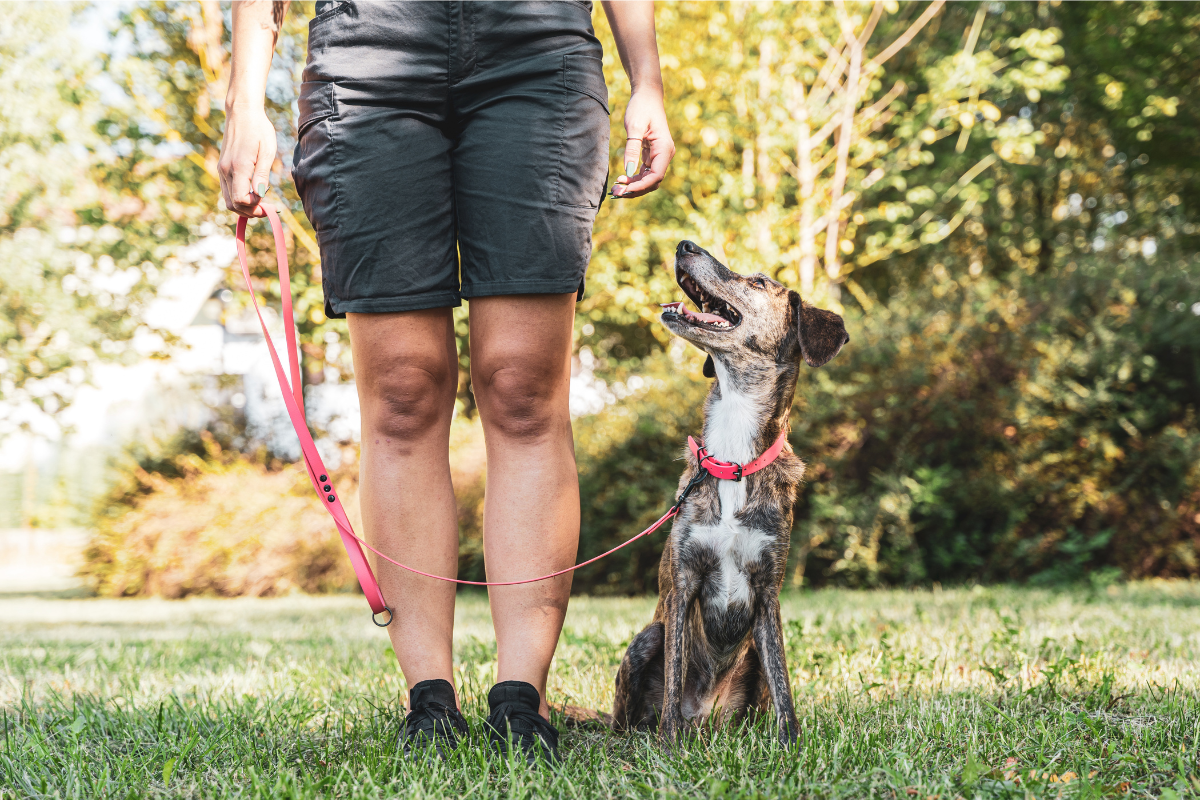Welcoming a Rescue Dog and Building Trust Through Kindness
Adopting a rescue dog is an incredible act of love and sometimes, a leap of faith. These amazing animals often carry emotional baggage from their past. That means traditional obedience approaches may not work. Training a scared dog takes time, patience, and compassion.
In this blog, we share trauma-aware dog training strategies that help rescue dogs build trust, overcome fear, and become confident companions, with natural support every step of the way.
Connection Comes Before Commands
Before teaching your rescue dog to "sit" or "stay," it’s vital to first earn their trust. Many rescued pets have never had a consistent human relationship. They may not understand praise, play, or even feel safe around people yet.
Start by simply being present with them. Let your dog watch you, follow you, sniff you, and get used to your voice and energy without any pressure to perform. Speak softly, move slowly, and offer high value treats from an open palm. Let your dog approach on their own terms.
This “bonding period” is essential. You’re not correcting, you’re connecting. It’s about showing your dog that you are predictable, kind, and trustworthy. This is the foundation of rescue dog training, and the single most important thing you can do before asking them to learn anything new.
Just like people, dogs learn best when they feel safe. Connection creates that safety.
How to build trust with a rescue dog:
- Use a calm, low voice
- Avoid sudden movements
- Let them approach on their own terms
- Offer treats from an open palm
- Spend time quietly in the same space
This “bonding period” is essential. Remember: You’re not correcting, you’re connecting.
Use Positive Reinforcement (Always)
Many rescue dogs associate raised voices or punishment with fear. That’s why positive reinforcement dog training is the safest, most effective method. Training a rescue dog starts with understanding each other, not control. You’re not here to dominate your dog, you’re here to guide them with patience and encouragement.
When your dog does something right, reward it immediately with a treat, verbal praise, or a quick game. If they struggle or make a mistake, simply redirect or take a break, never punish. Fearful behaviours aren’t defiance, they’re communication.
Your goal is to help your dog feel safe enough to try, knowing that good things happen when they do.
Because every success, no matter how small, builds confidence, and confidence is the real foundation of lifelong learning.
DO:
- Use treats, toys, praise, or affection
- Try a clicker if they’re responsive
- Keep sessions short and enjoyable
DON’T:
- Use choke collars or aversive tools
- Punish fear-based behaviours
- Expect perfection too soon
Training a rescue dog starts with understanding each other, not control.
Start with Simple Confidence Builders
Instead of jumping straight into sit-stay drills, use games and small challenges to build confidence. Try:
- Teaching them to touch your hand (targeting)
- Saying their name and rewarding eye contact
- Celebrating when they come to you on their own
These small steps help rescue dogs learn that training is fun, not scary.
Watch Their Body Language Closely
Dogs are always communicating. In rescue dog training, reading their body cues is key to avoiding overwhelm. Instead of asking, “Why won’t my dog listen?” ask, “What is my dog trying to tell me right now?”
Respond to their cues by slowing down, giving space, or shifting to a quieter activity. Sometimes, the best thing you can do for your rescue dog is just sit beside them, breathe deeply, and wait for them to feel ready.
Watch for signs of stress:
- Lip licking, yawning
- Turning their head away
- Tucked tail, ears back
Signs of comfort:
- Wagging tail
- Soft body
- Relaxed mouth and posture
Respond accordingly, slow down or stop if they seem stressed. By respecting your dog’s emotional boundaries, you build trust, and that trust becomes the bridge to all future learning.
Keep Sessions Short and Sweet
Short, positive sessions build success. No more than 5–10 minutes at a time. Tips:
- End on a win
- Give a release cue like “All done!”
- Let them play or rest afterwards
Training a rescue dog should feel empowering, never exhausting.
Support Their Nervous System
Dogs stuck in a “fight or flight” state can’t focus or learn well. That’s where natural support helps. At Pet Relief, many pet parents use our Comfort & Calm blend or Rescue & Relief blend to provide natural anxiety relief for dogs, especially during early training.
A calmer dog is a more confident learner.
“Our rescue dog was terrified of everything. After starting Comfort and Calm, she began to engage in training. Now she’s doing tricks!” – Mel P.
Celebrate the Little Wins
Every new behaviour is a big deal. Whether it’s sitting near you, taking a treat, or walking past another dog without fear, these are major milestones.
Tips for success:
- Keep a training journal
- Celebrate small wins out loud
- Take photos and videos to track progress
- Share updates with family, friends, or your online community
You’re helping your dog rewrite their story.
When in Doubt, Get Help
If you're struggling, reach out to a professional. Rescue dog behaviour help from a professional can transform your training experience.
Look for a trainer who:
- Uses only positive reinforcement
- Specialises in fear-based behaviour
- Is “Fear-Free Certified”
- Has experience with rescue dog training tips
It’s not failure, it’s teamwork!
Go at Their Pace, Not Yours
Training a rescue dog isn’t about rushing or “fixing” them. It’s about rebuilding trust and confidence at a pace that feels safe for your dog.
With love, patience, and the right support, your rescue dog can thrive.


